In Part 6a of this series on revelation, we will closely examine the evolution of the LDS temple rites. If you have not read Part 1 of the revelation series, I highly recommend that you do so before reading this post (you can read it here).
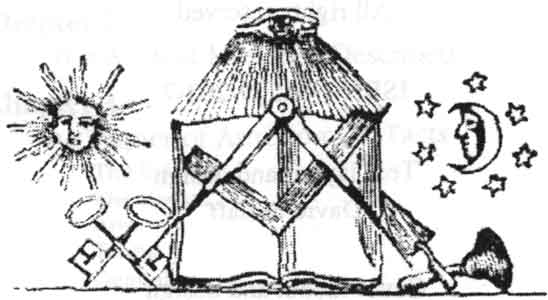
There are countless books written about LDS temple worship. I am going to simply touch on the subject to show my point of bias in revelation. I will also lay out a timeline showing how the ceremony changed over time. Some of the changes could be attributed to cultural and/or individual influences. As I have approached this subject, I have tried to stay respectful to what is held very sacred for so many members of the LDS church. Most of the information I present here is from a well-written book, “The Mysteries of Godliness, A History of Mormon Temple Worship,” by David John Buerger. I highly recommend it! Unless otherwise noted, all references come from his book.
Joseph Smith was a Freemason. Did this influence the temple ceremonies? I would say yes, very much so. Some might assert that Joseph lifted or stole Masonic signs and tokens for use in the temple; others would say that he adopted the signs and tokens to teach what he saw needed to be taught. Would our temple ceremonies be different if he hadn’t been a Freemason? Absolutely. And I believe that if Joseph were born in our day, the temple ceremonies would be very, very different than they are now.
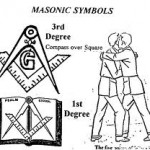 26 December 1817 – Joseph Smith Sr. became a Mason (pg 44).
26 December 1817 – Joseph Smith Sr. became a Mason (pg 44).
2 March 1818 – Joseph Smith Sr. passed to the degree of Fellow Craft (pg 44).
7 May 1818 – Joseph Smith Sr. raised to the sublime degree of Master Mason (pg 44).
1825-1827 – Hyrum Smith became a Mason at some point during these years (pg 44).
November 1831 – The sealing ordinance was implemented (not a marriage sealing). A priesthood bearer was empowered to simultaneously seal a whole group of people to eternal life or seal their names in the “lamb’s book of life” (pg 2-3).
1832 – The School of the Prophets was formed (Doctrine & Covenants, Section 88) – a select group made up of early leaders for both theological and secular learning.
January 1833 – The washing of the feet began in the School of the Prophets and was associated with “sealing up” (pg 7).
January 1836 – The ceremony consisted of washing and anointing the body (bathing in large tubs and pouring oil liberally from a horn onto the head), blessing and sealing the individual, and washing the feet. This was patterned after washings and anointings described in both the Old and New Testament. Hosannas were shouted, unknown tongues were spoken, and visions were seen.
27 March 1836 – Kirtland Temple is dedicated.
March 1836 – Visions and speaking in tongues continued, including “cloven tongues like unto fire rested upon those who spake in tongues and prophesied” (pg 22).
30 March 1836 – A group of 300 of the church’s male elite meet. Bread and wine prepared “sufficient to make our hearts glad”. Blessings and cursings were pronounced lasting until daylight. Angelic visitations were witnessed, and many spoke in tongues (many compared their experience to the day of Pentecost). Some involved did not have this same experience and placed much of the responsibility of the visions as a result of the wine that was freely drunk (pg 29-30).
27 June 1839 – The calling and election made sure was introduced. This also introduced the second comforter, a personal manifestation of Jesus Christ (pg 35).
January 1841 – The saints were instructed to build another temple (pg 36). (Kirtland ordinances were forerunners to ordinances that would be revealed in the Nauvoo temple.)

The square is one of the most easily recognizable masonic symbols, the square teaches us to square our actions by the square of virtue. Thus being mindful, purposeful and responsible in our actions.
December 1841 – Joseph Smith petitioned for membership in the Nauvoo Masonic Lodge (pg 50).
15 March 1842 – Joseph Smith was initiated as an entered apprentice Mason and received the Fellow Craft and Master degrees the next day. Normally there was waiting period of 30 days to be a Master Mason; this was skipped in Joseph’s case (pg 51).
16 March 1842 – Female Relief Society was formed. Joseph’s address was filled with Masonic language (pg 51).
March 1842 – Joseph Smith participated heavily in Mason lodge meetings and witnessed the Entered Apprentice degree ceremony five times, Fellow Craft degree ceremony three times, and the Master Mason degree ceremony five times (pgs 51-52).
1 May 1842 – Another sermon by Joseph Smith carried heavy Masonic undertones (keys, signs, words, etc.) (pg 52).
4, 5 May 1842 – Forty-nine days after his Masonic initiation, Joseph Smith introduced the new endowment in the upper story of his red brick store; this was for men only (pg 52). Those that were introduced to the endowment were some of the first to be introduced to polygamy. Joseph Smith was already practicing polygamy at this time.
“The clearest evidence of Masonic influence on the Nauvoo temple ceremony is a comparison of texts. Three elements of the Nauvoo endowment and its contemporary Masonic ritual resemble each other so closely that they are sometimes identical. These are tokens, signs and penalties” (Buerger pg 52).
Following are just some of the common Freemasonic Rites that were used during this time that could be compared to Mormon temple ceremonies. Again, these are Freemasonic Rites:
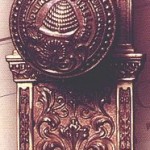
“The Bee Hive, Masonically, is an emblem of Industry….When and why the hive of the bee entered Freemasonry as a symbol no one knows….In the book, The Early Masonic Catechisms, the bee in Masonry is mentioned as early as 1724…” (The Craft and Its Symbols, by Allen E. Roberts, Macoy Pub., 1974, p.73)
[The grip of the Entered Apprentice:] The right hands are joined together as in shaking hands and each sticks his thumb nail into the third joint or upper end of the forefinger…[After receiving the Boaz, the initiate is given a lamb-skin or white apron which is donned.] (pg 53).
[The pass-grip of the Fellow Craft] is given by taking each other by the right hand, as though going to shake hands, and each putting his thumb between the fore and second fingers where they join the hand, and pressing the thumb between the joints (pg 53).
[The pass-grip of the Master Mason] is given by pressing the thumb between the joints of the second and third fingers where they join the hand (pg 53).
[The sign and due-Guard of the Master Mason] is given by raising both hands and arms to the elbows, perpendicularly, one on each side of the head, the elbows forming a square. The words accompanying this sign, in case of distress, are, “O Lord, My God! Is there no help for the widow’s son?” (These were the last words Joseph Smith spoke before he was killed) … The Due Guard is made by holding both hands in front palms down (pg 53-54).
“…a prayer circle which required Masonic initiates to assemble around an altar, place their left arm over the person next to them, join hands, repeat the words of the Most Excellent Master, and give all the signs from the initial ceremonial degrees” (pg 55).
There are three degrees of Freemasonry. To progress, a member must participate in a symbolic ritual before he can continue to the next degree. Each degree has its own symbols. Typically, the new member will work with an existing member to help in learning the questions and answers that are related to that degree. When a catechism is completed, the member can move on to the next degree.
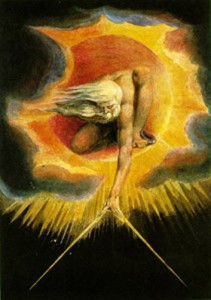
The compass in masonry teaches us to circumscribe our desires and keep our passions within the boundaries of right, much like a compass circumscribes a circle.
May 1842 – Although Joseph Smith declared twice before that the endowment was complete (once in 1836 and again in 1842), he prayed to preserve his life until he revealed the endowment in full (pg 59).
1842 – The earliest reference to garments was mentioned. The original garments had four marks that were snipped into the cloth as part of the original Nauvoo endowment ceremony (cuts were later replaced by embroidered symbols). The garments were one piece and went all the way down to the wrists and all the way down to the ankles. They also had collars and a bow in the front. (Buerger, 1987, pg 56; Beadle, 1870, pg 497; Bennett, 1842, pg 247–48).
1843– Celestial marriage, which equated to plural marriage until the late 19th century, was added to the ceremony along with the second anointing or the fullness of the priesthood (pg 58-59). When celestial marriage was added, Joseph Smith probably had around 30 wives, some already married to other men. Click here to link to Ancestry.com that show all of Joseph Smith’s wives. Another detailed list can be found on wikipedia – the most accurate source on earth! 😉 “A father who gave his daughter to the Prophet as a plural wife was assured that the marriage ‘shall be crowned upon your heads with honor and immortality and eternal life to all your house both old and young'”. (Rough Stone Rolling, Richard Bushman, pg 439)
1843 – Wives were included in the endowment (pg 58-59).
27 June 1844 – Joseph Smith was assassinated.
Next week we will go over Brigham Young’s timeline with the temple ceremony.


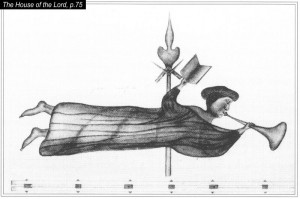



Reform Mormonism has its own Endowments–Four in total. The first three are administered at special “Temple Events” in Endowment Quorums. The third Endowment sets the stage for the fourth, which is administered at home within the family (between spouses or closest family members) in preparation for death/passing through the veil.
In the Reform Mormon Endowments the emphasis is not fidelity to a church or Priesthood organization but faithfulness in one’s pursuit of Eternal Progression and seeking personal revelation.
Reform Mormons openly acknowledge the influence of Freemasonry on Joseph Smith’s theology and on his efforts to “reform” Mormonism during the last year or so of his life.
For it’s social structure, Reform Mormonism look to Freemasonry (with its ritual and lodges) rather than to a church (with its weekly worship services, clergy, etc.). Anyone who seeks the Reform Endowment can receive it if he/she is willing to make the covenants involved. Once a person recieves the Endowment, he/she in quorum with others who have received it, administer it to others. Endowmed Reform Mormons are free to gather with one another whenever they like for Prayer Circles (using the signs and token learned in the Endowment) and they are encouraged to engage in efforts to advance Eternal Progression, the brotherhood/sisterhood of all people, high ethical standards, personal and civic virtue, and the pursuit of knowledge and truth–whatever its source.
Very interesting Rob, thanks for your input!
Rob,
I am unfamiliar with the name “Reform Mormons”. You should write a post for us dealing with its origins, etc.
Over and over again we can see evidence that the lord prepared the way for fullness of truth through many avenues. Such as Sydney Rigdon and the Disciples of Christ leaders. Many of their teachings had truth to them and prepared many people for the fullness of the gospel. It should be no surprise that there is cross over to other religions and or societies. I find it interesting though, that the Lord seems to give out truth in bits and pieces. Here a little, there a little. Sometimes he gives out more that we can handle and the person receiving the vision or revelation is commanded to not reveal all of it yet. (Nephi, Isaiah, Joseph) I think some people believe Joseph received all revelation for the re-establishment of Christ’s church all at once or that the Lord walked him through it step by step. That doesn’t appear to be the Lord’s pattern. He didn’t do it with Moses or Noah. He causes us to think study and ask him questions. Joseph, Oliver and Sydney spend many hours and weeks studying, fasting and praying trying to find answers. Many of the questions arose from their own backgrounds and beliefs they brought into the new religion. They would search the scriptures to verify beliefs they already had and when they couldn’t find a clear answer or their beliefs contradicted with the bible or Book of Mormon, this would be a topic to petition the lord.
I would not reccommend that book but thank you for being sensitive to what you posted in your blog.
Thank you Jeff for your thoughts. I think you are very correct in saying that revelation doesn’t come easy and doesn’t come all at once.
Jeff,
What are your reservations in recommending Buerger’s book?
I would just like to offer the thought that perhaps instead of the endowment starting with Joseph Smith, it in actually was given to Adam and taught to mankind down through the ages. During times of righteousness, the endowment was given in exactness but during times of wickedness, the endowment was distorted and “mixed with the doctrine of men”. So the Masonic rites are man’s interpretation of the original endowment. When Joseph gave us the endowment, through process of time he gave us the pure endowment that Heavenly Father originally gave to Adam. While to two “rites” may be related, I contend that the original came from God to Adam, not from the freemasons to Joseph.
I would be cautious when using words like “exactness” and “pure” and “originally” – This will lock you in to having no changes ever. One must be flexible! In the following post/weeks, you will see many changes and big changes that were made to the ceremony – but again in a respectful way. You can see that the way Joseph Smith did the washing and anointing is no longer done in that way. Also many changes have been done in your generation.
As far the claim that the Masonic rites were on off shoot of the original ceremony, I would love to see the connection there. And by connection, I don’t mean quotes from people saying that’s how it happened.
There are parallels, here’s Nibley: [There are] parallels between Mormon rituals and those of the Hopi . . . . [including an] initiation ritual [regarding parts of the body and the pronouncement of blessings] . . . . Parallels appear between the language of the Mormon temple ceremony and the Hopi myths of origin . . . . Responding to someone who asked about similarities between the Mormon temple endowment and the Masonic ceremony, Nibley wrote that the parallels between the Mormon endowment and the rites of the Hopi ‘come closest of all as far as I have been able to discover — and where did they get theirs?'” Boyd J. Peterson, Hugh Nibley: A Consecrated Life (Salt Lake City: Kofford Books, 2002), 282.
I personally think it would be hard to connect the dots, not saying that it can’t be done. The Book of Mormon I don’t think makes any mention of doing work for the dead, celestial marriage, washing of the feet, or anything temple like. 3 Nephi 13:17 “But thou, when thou fastest, anoint thy head, and wash thy face;” – this is the closest thing I found. But maybe there is other things. For me instead of trying to make that connection, I’m satisfied with saying, “he adopted the signs and tokens to teach what he saw needed to be taught”. And yes I just quoted myself.
Mom,
The difficulty with seeing Masonic rites as an interpretation of the original endowment is that the Masonic rites did not exist until the 17th century. This however should not be a problem even within the paradigm of a true-blue Mormon. The Masonic ritual was just the delivery system (the hypodermic needle, if you will) of what God wants us to learn (the actual medicine).
Paul Barker,
If you read under “Temple” in the Bible dictionary, it tells us that the temple rites were available during all generations, the difference being that work for the dead could not be done until after the Savior was resurrected and opened the doors of salvation to those who had passed on. So we are the ONLY dispensation that has been able to do work for the dead; that is one reason why there is such a huge amount of work to do.
Mom,
I have no problem with the notion that a temple endowment was available to other generations. Again, they would not have relied upon Speculative Free-Masonry as the delivery system; it would have looked different. To say that it has always been the same is hugely problematic as it has changed during my lifetime and several times during your lifetime. God accommodates us in our manner of learning; he speaks to us in “our language”. I would argue that because so many of the early leaders were Free-Masons, the Masonic rites were the perfect vehicle to teach what God intended us to learn. Now a day, the LDS temple rites have been modified to accommodate our 21st century sensitivities.
The resurrected Savior appeared and there was no mention of temple work then nor from 3 Nephi on.
Michael Barker,
I understand what you are driving at. Sometimes I have wondered why some of the temple ceremony has changed. As I think about that, I have come to realize that the “essential” parts of the endowment have remained consistent.
From the temple ceremony itself, we know that God gave Adam the temple rites. I wonder how those rites and covenants were presented to him? Just curious.
I think the essential part is that it is an “ascension” ceremony.
Here is a great essay written by Charles Paul. Tell me what you think mom:
https://www.sunstonemagazine.com/wp-content/uploads/sbi/articles/154-13-19.pdf
Paul Barker,
Very interesting post. John (Jack) Welch has shown interesting connections between the temple ceremony and the Book of Mormon (well, sermon on the mount). He argues (I think quite fairly) that the temple “indications” are more clear in the BoM than in the NT.
The entire book is online, but here is a representative chapter.
I think you lent me that book! I’ll have to crack that open.
Mike I agree that the temple ceremony is an assension ceremony. Avraham Giliadi teaches that the book of Isaiah teaches this.
Jeff,
Funny you should bring that book up. It is the one that got him excommunicated with the rest of the “September Six”!!
JT Prince,
JT
Thanks for the link. Interesting paper. I’ve often wondered about the things that the book of mormon people and others were commanded not to write and guessed it might be something to do with the temple ceremony. Food for thought. You definately can see the gosple doctrine taught in temple all through the book of mormon. Along the lines of Chareine’s comments I’ve wondered if our temple work is specific to us and our role as Ephriam to gather Isreal and the turning of hearts of fathers to sons through proxi sealing work. Reguardless I love our modern temple work. i love the thought of in a small way being a “savior” for those who are wanting their work done and as always when serving others it brings me closer to my savior and creator in the process.
Jeff,
When I went through the temple with Kylan Rice for his endowment, I asked him what he thought. He said that he liked the idea of doing something that others have done for a long time. I had never stopped and looked at it that way
Michael Barker,
don’t know the details about that other than i believe he was fully exhaunerated from that
Jeff,
You are quite right. He was the first of the “September Six” to get re-baptized. Maxine Hanks was re-baptized earlier this year. We are flying up to Seattle tomorrow to listen to her and Kristine Haglund speak.
Michael Barker,
I have read the article once already. However, I would like to re-read it and study it before making any comment.
Michael Barker,
I read the article twice. It does not surprise me that ancient societies have sacred rites that are know only to the initiates. What I was surprised at was that those rites were government controlled/sponsored.
As I read, the thought that kept coming to my mind is that those things that cause such controversy are coming to us from our Father in Heaven. He is the author of the rite and for us to try to alter that, or change it by “grass roots” movements or suggestions isn’t going to find to much success.
I loved coming to understand that part of the reason we are commanded not to share the rite outside of the temple is to teach us loyalty and allow Heavenly Father to know who He can trust. Because it is His rite, He sets the terms and conditions so how would we open a discussion of sacred things outside of the circumstances in which we received them? How would we change the perception of an entire culture when we are still struggling to completely understand that which has been given to us?
My position was, and still is, that we made covenants with our Heavenly Father when we were baptized. As we prove our ability to keep those covenants, we are free to make additional covenants with Heavenly Father. Just as you wouldn’t give a child responsibility for the household finances before he has been able to manage his own allowance wisely, Heavenly Father reserves knowledge for us as we grow into it. Not to hide or punish us, but to allow us to grow and succeed. And like all knowledge, that comes at an individual pace. Curiosity itself is insufficient to reveal the “mysteries of godliness”. Commitment to live what is given is of greatest importance.
The temple has been called “God’s University”. You can’t just from 1st grade to university. You have to take all the little steps in between and put in the time and effort. So it is with the temple. Those that don’t want to do that and pay the price will always cry and complain that we are being secretive but if they were given what they requested without effort or price on their part, then the sacred would become profane. The temple is open to anyone willing to pay the price that the homeowner has required. That Homeowner is not mortal nor is He influenced by mortality. It is our privilege to work to meet His requirements, not our privilege to dictate our requirements to Him. Just as mortal parents set limits and conditions for their children until they reach maturity, so Heavenly Father has set conditions for us as we travel through mortality.
But then, you know all of that. While I find that my faith is simple, it certainly is not easy. I am learning that there is a difference in those two words. They do not equate.
I love you, son.
I really really enjoy this blog!!!!!
I don’t really know what to think of J. Smith most of the time but approaching this from a faith perspective I can see how his becoming a mason was necessary. I don’t like how the general membership/church paints J. Smith into a corner as being such an unlearned man when I really can’t see him that way. But approaching the coming forth of the temple ceremony and thinking about him being unlearned in this area then I feel a lot more comfortable with the fact that maybe he had to see (multiple times) a structured ceremony which he adapted (hopefully with God’s directions) into the endowment.
When were the degrees of glory first taught? Was that given by revelation only or are they also contained in the Book of Mormon? I am also curious to the average age of becoming a mason during that time period – but in my five minutes of attempting to google this on the internet I didn’t find anything.
Just a note, Paul. In the book, “In Heaven as it is on Earth: Joseph Smith and the Early Mormon Conquest of Death”, it states that Hyrum was supposedly made a a free and accepted Mason in Palmyra. His initiation was recorded in the local lodge, but it is expected that he was not very active in the lodge… Possibly only joining for job opportunities.
Joseph may have had early exposure to Masonry via Hyrum and his father, but by all accounts, they weren’t really into freemasonry until Nauvoo.